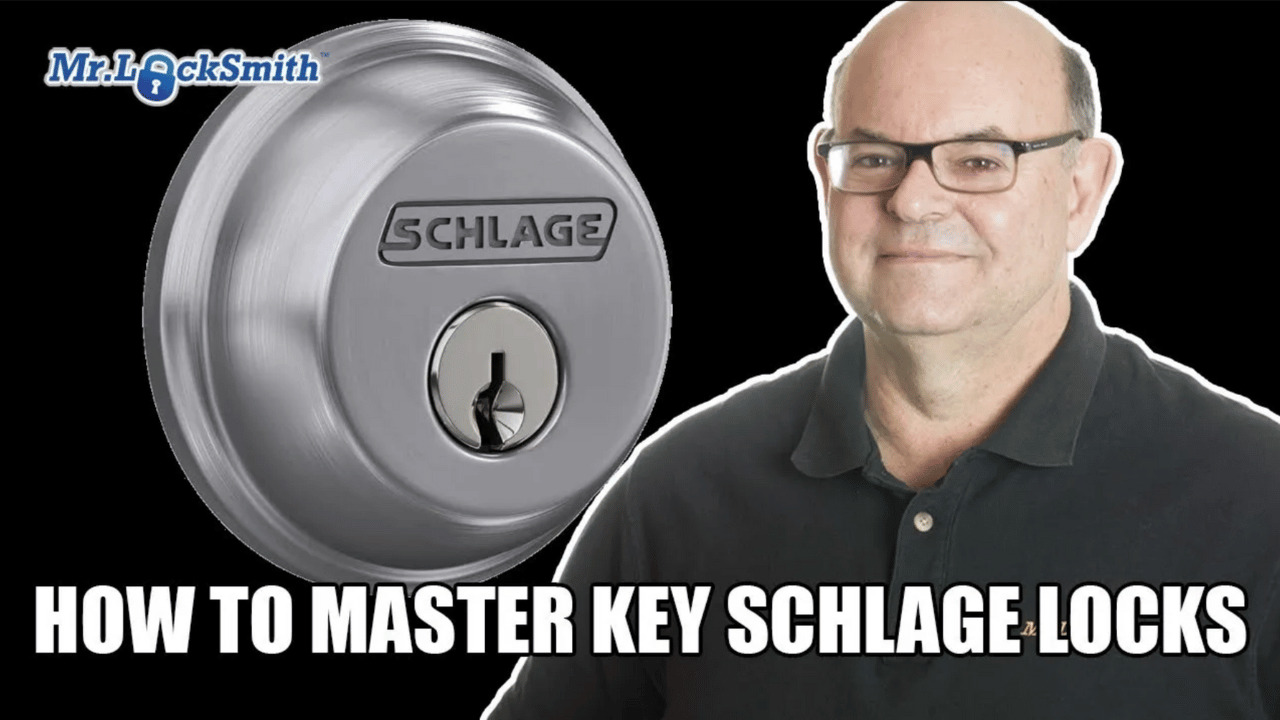How to Master Key Schlage Locks: Master keying is an essential skill for locksmiths or anyone interested in the nuanced world of locks and security systems. Today, we’ll delve into the basics of master keying a Schlage lock. This tutorial will provide a step-by-step guide, explaining the process in simple terms and helping you to understand the fundamentals of the master key system.
YouTube Creator Award Silver Button:
Visit Mr. Locksmith YouTube with 200,000+ Subscribers:
http://www.youtube.com/user/24hrMrLocksmith
How to Master Key Schlage Locks
In this guide, we will explore how to re-key a lock and master key it to fit a specific master key. For this demonstration, let’s consider a master key designated numerically as 21426. This number isn’t arbitrary; rather, it’s the result of a computer program that generates a master key based on specific criteria and requirements. Most Master Key systems are designed by Mr. Locksmith Commercial Locksmith.
Mr. Locksmith Automotive (604) 259-7617
Master Key Systems
Streamline Access with Master Key Systems
Simplify your business’s security with a master key system. This system allows you to control access to various areas within your property with a single key, providing both convenience and enhanced security. Our expert locksmiths design and install custom master key systems tailored to your specific needs, ensuring that only authorized personnel have access to restricted areas.
Commercial Master key locks are a type of locking system commonly used in buildings where multiple locks are installed. Also, there is a need for different levels of access control. These locks are designed to be opened by two different keys: a master key and a regular key. Here’s how they work:
Regular Key
Each individual lock has its own unique regular key, which can only open that specific lock.
Master Key
The master key is a special key that can open multiple locks within the system. It provides access to all the locks in the system, allowing a designated person (such as a building manager or security personnel) to access all areas.
Master Key Hierarchy
Master key systems can be hierarchical, meaning that there can be different levels of master keys. For example, there can be a grand master key that opens all locks in a building, and then sub-master keys that open specific groups of locks. Security: It’s crucial to maintain the security of master key systems. If a master key falls into the wrong hands, it could potentially compromise the security of the entire building.
Understanding the Key Components
To master key a lock, it is crucial to understand the role of bottom pins and master pins (top pins). Let’s take our master key, AMK 21426. The A1 key, for this example, is numbered 43448. The process begins with a simple concept: selecting the lowest number between the master and the secondary key to determine the bottom pins. Here’s a breakdown:
AMK: 21426
AA1: 43448
Master Pins: 2, 2, X , 2, 2
Bottom Pins: 2, 1, 4, 2, 6
The master pins are calculated by subtracting the bottom pin number from the top pin number, rendering a basic and effective system for customization.
The Process of Master Keying
Let’s translate the theory into practice. Start by removing the lock cylinder from its casing, which could be a mortise or a kick cylinder. Key features like lazy cams might be present, but they don’t interfere with the master keying process.
Preparation: Extract the pins from the lock cylinder and set them aside. For this example, we’re utilizing a 5 pin, 6 pin cylinder system.
Inserting Bottom Pins: For each slot in the cylinder:
Place a bottom pin corresponding to the A1 key – numbers like 2, 1, and 4 are crucial for proper alignment.
Adding Master Pins: Insert the corresponding master pins, ensuring the proper balance for easy operation with both the main and secondary keys. Remember, no pin is placed in the ‘X’ position.
Reassembly: Insert the pins into their designated slot in the cylinder, taking note of marker placements to denote top and front sections of the lock.
Testing and Final Touches
With the key pins in place, test both the A1 and master keys to ensure smooth operation. The A1 should operate flawlessly, as should the master key. If any issues arise, revisit the pin placements and ensure they align with the key’s bitting.
Olden-day locksmiths traditionally used graphite to ensure smooth operation post-assembly, but modern preferences lean towards Tri Flow, a lubricant that ensures longevity without the harmful effects of graphite or other traditional oils like WD-40.
Conclusion
Master keying a lock can be a straightforward process with the right guidance and preparation. This tutorial is part of a broader series aimed at providing more insights into master key systems. If you’re eager to delve deeper into the world of locksmithing, ensure to subscribe to our channel for more comprehensive guides and visit our website for specialized training courses catering to various expertise levels from beginner to advanced.
Stay tuned as we develop a complex six-lock series, teaching you to design, cut, and master key from scratch. Happy locksmithing, and thanks for joining us on this journey to mastering lock rekeying and key creation!
Mastering the Art of Master Keying Schlage Locks
Mr. Locksmith is your BC Locksmith 24 hr Mobile Locksmith and for Surrey and the Lower Mainland. We provide professional locksmithing & security services. Terry Whin-Yates is a 3rd Generation Locksmith and has a BA (Hons) in Criminology from Simon Fraser University.



